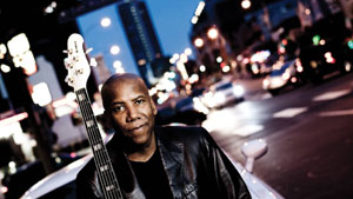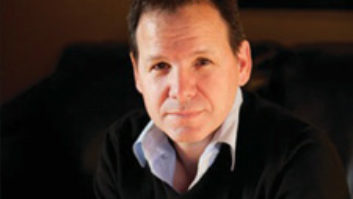
Since appearing on the music scene in 1988, singer/songwriter Sarah McLachlan has won the hearts of legions of devoted fans. This time around, McLachlan is out in support of this year’s release of Afterglow with a seven-piece band. Mix caught up with the artist’s front-of-house and monitor engineers at the new Glendale Arena in Glendale, Ariz.

Front-of-house engineer Gary Stokes, who has mixed for Sarah McLachlan since 1989, pictured at the Midas XL4
Front-of-house engineer Gary Stokes mixes on a Midas XL4 and uses the board’s direct outs for record feeds and automates effect sends, mutes and routing via two or three scenes per song. The desk also drives snapshots on a Yamaha DM1000 providing extra effects returns. “I even use a couple of the Yamaha’s internal effects,” Stokes says.
The house system is a Meyer MILO line array provided by Toronto’s Sound Art. Describing the hang, Stokes says, “There are 16 MILOs in each left and right hang, plus two new 120-degree MILO downfills underneath and two more downfills under each of the eight MILO sides, 90 degrees to the mains. The new UP-J powered cabinets provide primary fills—they have a nice small profile and great sound—and eight Meyer M1Ds handle extreme near-field applications and some hard-to-reach spots. I’ve always been a Meyer fan, but this system seems to set a new standard for ease of use and quick setups.
“Our system engineer, Gord Reddy, uses SIA SMAART extensively and has a remote tablet to control the system, driving XTA processors while listening to SMAART from anywhere the audience could go—and a few other places, as well.
“My main concern is getting across Sarah’s emotion—the dynamic and dramatic mood she creates—and the bond her fans can feel.” To do this, Stokes relies on an XTA D2 dynamic EQ for McLachlan’s vocals. “It’s cleaner than other devices I’ve used, and with one set of controls for two channels, I know both of her principal microphones always have the same setting.”
A deeper look into Stoke’s outboard closet reveals compressors such as Crane Song Trakker, Focusrite Session Pack, dbx 160S and BSS Audio DPR-404 and DPR-944. “I can’t get enough of the dynamic EQ,” Stokes says. “I am also using the new TC EQ Station as a left/right insert—another dynamic EQ! I have a Rane RPM88 as a multipurpose insert doing some group delay and delaying my near-field monitors and headphone bus back in time with the P.A. An Apogee Big Ben clocks all of the effects and the DM1000 at 96 kHz to take the digital stuff a little closer to the nice analog world of the XL4.”

Monitor engineer David Pallett pictured on top of the Yamaha PM1D
Monitor engineer David Pallett works on a Yamaha PM1D. His rack includes 12 Sennheiser EW300 in-ear monitor transmitters, 10 Furman SP20 headphone amps for wired in-ear mixes, a Sennheiser EM 3032 dual-wireless mic receiver, Apogee Big Ben word clock for the PM1D and two True Systems Precision 8 8-channel mic pre’s and a P2 analog 2-channel mic pre. “I recently added a Professional Wireless Systems GX4 antenna combiner/amplifier and helical antenna, which really helps keep the four onstage wireless mixes clean.
“Sarah is using Sensaphonics Soft 2X molds for in-ears,” Pallett continues. “I primarily use the onboard compressors and gates on the PM1D. The only external device I have is a Focusrite ISA 220 Session Pack through which I route all of Sarah’s vocal mics. The rest of the band uses Audix VX10s for vocals.”




